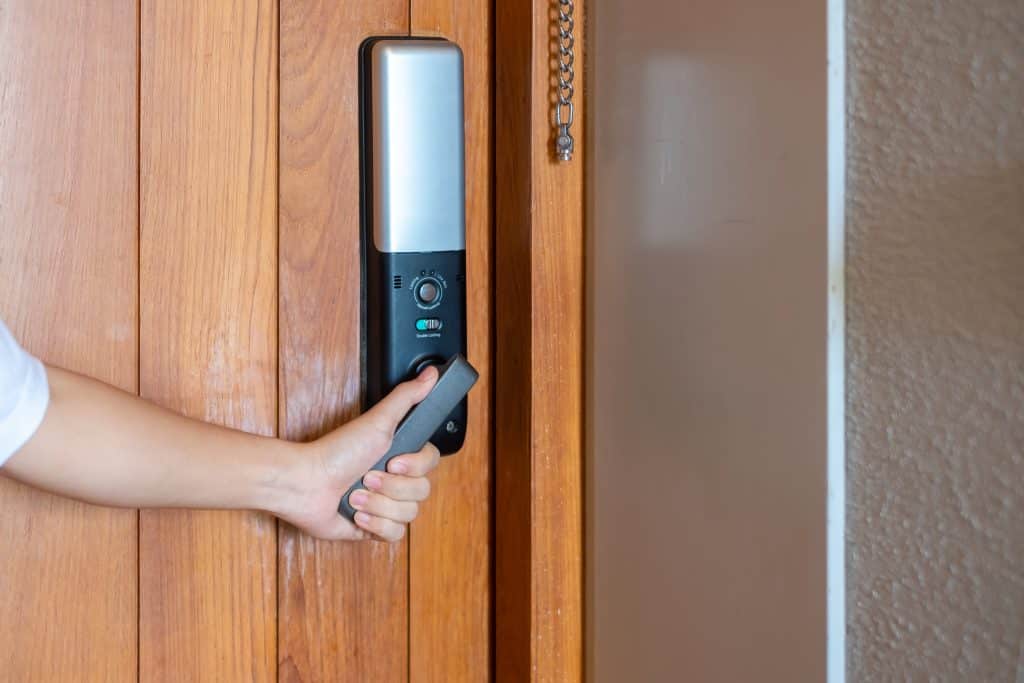In today’s interconnected world, cybersecurity is more important than ever, and protecting your home from cyber threats has become a crucial aspect of maintaining your family’s privacy and financial security. As the prevalence of cybersecurity threats grows, home users must be increasingly vigilant to safeguard their personal information and digital assets.
Contents
- 1 Understanding Cybersecurity Threats
- 2 Protecting Your Home From Cybersecurity Threats
- 3 Secure Your Wi-Fi Network
- 4 Keep Your Devices Updated
- 5 Install and Maintain Antivirus Software
- 6 Implement Strong Passwords and Multi-Factor Authentication
- 7 Be Cautious of Suspicious Emails and Links
- 8 Protect Your Smart Home Devices
- 9 Educate Your Family on Cybersecurity Best Practices
- 10 Protect Your Home From Cybersecurity Threats With These Tips Today!
Understanding Cybersecurity Threats

Cybersecurity threats encompass a wide range of malicious activities that compromise your home network’s and connected devices’ security, leading to potential financial loss, privacy breaches, and other adverse consequences. These threats include malware, phishing, ransomware, and more, often disguised in seemingly harmless emails, websites, and software applications.
Recognizing how these threats can infiltrate your home network and devices is essential, allowing cybercriminals to steal sensitive information, access your financial accounts, or even take control of your smart home devices. By understanding the risks associated with cybersecurity threats, you can better protect your home and maintain the privacy and security of your family’s data.
Protecting Your Home From Cybersecurity Threats
To safeguard your home against cyber threats, adopting a proactive approach that involves securing your network, devices, and digital accounts is essential. This article will explore several steps you can take to protect your home from cybersecurity threats and ensure the safety and privacy of your family’s information.
Secure Your Wi-Fi Network

Your Wi-Fi network is the gateway to your home’s connected devices and the internet, making it an attractive target for cybercriminals. Ensuring your Wi-Fi network is secure is a critical step in protecting your home from cyber threats. To do this, start by changing the default login credentials for your router, as cybercriminals often target devices with unchanged default settings.
Next, use strong passwords and enable WPA3 encryption, the latest and most secure wireless encryption standard. If your router does not support WPA3, consider upgrading to a newer model. Additionally, consider creating a separate guest network for visitors, preventing unauthorized access to your primary network and connected devices.
Keep Your Devices Updated

One of the simplest ways to protect your home from cyber threats is to keep your devices and software up-to-date. Manufacturers and software developers frequently release updates to patch security vulnerabilities and enhance the performance of their products. Regularly updating your devices and software can reduce the risk of cybercriminals exploiting known security flaws.
Set your devices to automatically install updates whenever possible, and periodically check for updates on devices that do not support automatic updates. Remember to update not only your computers and smartphones but also your smart home devices, such as security cameras and smart thermostats.
Install and Maintain Antivirus Software

Installing reputable antivirus software on all your devices is essential to protecting your home from cybersecurity threats. Antivirus software scans your devices for malware, viruses, and other threats, helping to keep your data and devices safe from harm. Choose a well-known antivirus provider and ensure the software is compatible with all your devices.
Keep your antivirus software updated to detect and combat the latest threats effectively. Most antivirus programs offer automatic updates, so enable this feature if available. Regularly run scans on your devices to proactively identify and remove any potential threats.
Implement Strong Passwords and Multi-Factor Authentication

Using strong, unique passwords for your online accounts is vital to secure your personal information. Avoid using easily guessable passwords, such as names, birthdays, or common phrases. Instead, opt for complex passwords that include a mix of uppercase and lowercase letters, numbers, and special characters. Consider using a password manager to help you securely generate and store strong passwords.
In addition to strong passwords, enable multi-factor authentication (MFA) whenever possible. MFA adds an extra layer of security by requiring you to provide additional verification, such as a fingerprint, a text message code, or an authentication app, before accessing your account. By implementing MFA, you can significantly reduce the risk of unauthorized access to your accounts, even if your password is compromised.
Be Cautious of Suspicious Emails and Links

Phishing emails and suspicious links are common cybersecurity threats that can lead to financial loss, identity theft, or compromised devices. Be wary of emails requesting personal or financial information, urgent calls to action, or unusual grammar and spelling. To protect your home from these threats, learn to identify and avoid potential phishing emails and malicious links.
Being cautious and discerning regarding emails and links can help prevent falling victim to phishing attacks and other cyber threats. Additionally, avoid clicking on links in emails or text messages from unknown or untrusted sources. Instead, navigate the website directly by typing the URL into your browser or using a bookmark.
Protect Your Smart Home Devices

With the increasing popularity of smart home devices, securing these devices from potential cyber threats is essential. Begin by changing the default passwords on all your smart home devices, as using default credentials can leave your devices vulnerable to attack. Additionally, disable any unnecessary features or services that may expose your devices to potential risks.
Ensure your smart home devices receive regular firmware updates, including security patches and other improvements. Enable automatic updates for your devices or check for updates periodically. Taking these precautions can help safeguard your smart home devices and protect your home from cyber threats.
Educate Your Family on Cybersecurity Best Practices

Protecting your home from cybersecurity threats is a shared responsibility among all family members. Educating your family about online safety and cybersecurity best practices is important, ensuring that everyone plays a role in keeping your home secure. Discuss the importance of strong passwords, the risks of phishing emails, and safe internet browsing habits.
Encourage open communication about potential cyber threats and create a supportive environment where family members feel comfortable discussing any suspicious activity they encounter. By fostering a culture of cybersecurity awareness in your home, you can ensure that all family members remain vigilant and take the necessary precautions to protect your home from cyber threats.
Protect Your Home From Cybersecurity Threats With These Tips Today!
In conclusion, protecting your home from cybersecurity threats requires a proactive approach that includes securing your Wi-Fi network, keeping your devices updated, using strong passwords and MFA, and educating your family about best practices. By implementing the steps discussed in this blog post, you can help safeguard your home and ensure the privacy and security of your family’s information. Remember, maintaining a secure home is an ongoing process that requires vigilance, and the peace of mind that comes with knowing your home is protected is well worth the effort.


